Content
- 1 Growing flowers at home and in the garden - theoretical knowledge
- 2 Growing flowers at home - buying plants wisely
- 3 Breeding flowers competently - important tips for beginners
- 4 Where to start breeding indoor plants
- 5 What plants to choose for novice florists
- 6 Mistakes of novice florists
- 7 Useful and unpretentious indoor plants
- 8 Outcome
Foreword
Breeding and growing flowers at home is a rather laborious, but very interesting process. Knowing the basic rules for breeding and growing, you can create a beautiful blooming greenhouse in your apartment.
Growing flowers at home and in the garden - theoretical knowledge
Beginners should get ready: breeding home flowers takes effort and knowledge. For example, when buying exotic plants, do not forget that they need to create conditions similar to their climate. Naturally, you should not forget about lighting, humidity level, temperature in the room where your greenhouse will be located. But any home flower requires a certain location - you will have to select individual areas for them.
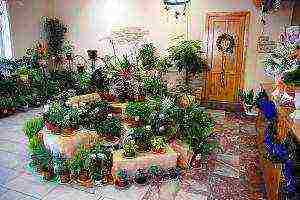
If you have such an opportunity, and the apartment does not meet all the requirements of the plant, you will have to create all conditions artificially... Fortunately, today special lighting devices, humidifiers and other accessories for the home garden can be purchased in stores. Watch out for the soil - there are plants that make very serious demands on the soil. If necessary, use organic and mineral fertilizers.

Do not forget to monitor the state of flowers, being able to distinguish between their state. After all, yellowed leaves, wilted buds, strange spots on the stems - all this can indicate problems, and illness and even a lack of nutrients in the soil can lead to the death of your pet. Naturally, a lot depends on how you choose a plant when buying - there are several important tips to consider when purchasing.
Growing flowers at home - buying plants wisely
If you buy a sick plant, it will naturally live a very short life. And therefore, if you are truly interested in creating a beautiful garden, you need to choose and purchase flower seedlings wisely.
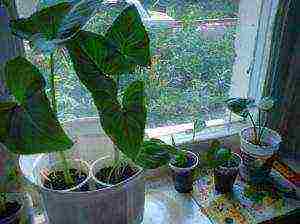
Important nuances of the purchase:
- It is advisable to buy flowers in spring, because at this time the plants adapt better to new conditions.
- Pay attention to the plants themselves - they should be healthy in appearance: no spots on the leaves and stems, the roots should not have visible damage. Also, all parts of the flower should be well developed.
- When purchasing a flowering plant, pay attention to the buds - the more unopened buds there are, the better.
- It is important to choose the right flowerpot for the flower, because in a small pot, a flower with a well-developed root system will be cramped and uncomfortable, which can adversely affect its development.
- Also, transport the plant carefully to avoid damaging it in transit.
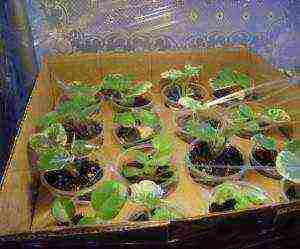
Arriving home, you first need to let the flower get used to the new environment, and then immediately transplant, since the land in which the flower is sold is unsuitable for plant life.
Breeding flowers competently - important tips for beginners
Many beginners in gardening more often acquire young plants in stores, after which they take care of them, eventually getting a full-fledged adult plant. However, experienced gardeners prefer to plant flowers on their own. The advantage of such plants is that they are more hardy and resistant than those that grow in greenhouses.Indoor plants propagate with the help of seeds, shoots, shoots, cuttings, there are also bulbous indoor flowers.
To perform these works, it is not necessary to be a specialist - the main thing is to understand which method of reproduction is preferable for a particular type of flower.

For example, a palm tree and laurel can be grown from seeds by the simplest method: we sow the seeds in pre-prepared soil, and cover the container with foil or glass. After that, the pot is placed in a warm and dark place. As soon as the first shoots appear, the glass is removed, and the plant is placed in a warm and bright place, the main thing is that the flower is protected from direct sunlight.
Wanting to grow flowers from cuttings (and this method is used to propagate hibiscus, ficus, cactus, geranium), it is very important to correctly approach the harvesting of cuttings. So, it must have at least three buds, two of which are buried with soil during reproduction, while the third remains open. Above the cuttings there is usually a mini-plaque, which must be removed after the plant takes root and puts out the first leaves.
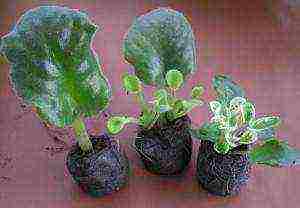
As you can see, growing flowers at home is a very enjoyable job. However, he requires you to be responsible in your actions: when buying plants, when choosing a place for keeping. Naturally, proper care of indoor flowers is also important, because without proper care they will simply die. By the way, growing flowers in the garden in winter is not much different from growing them at home. The only thing that is needed is to equip the greenhouse, carry out heating and make high-quality lighting. And then you can enjoy beautiful and flowering plants 365 days a year.
Rate the article:
(0 votes, average: 0 out of 5)
Indoor floriculture satisfies the human need for communication with wildlife. This is one of the most common and rewarding hobbies. Plants in the room create coziness, style, improve the composition of the air.
Any indoor collection can look great with a minimal investment of time. To do this, you need to properly organize the care of green pets.
Where to start breeding indoor plants
Determine where the flower pots will be. If the windows face west or east, then the sunlight will be on the windowsills only part of the day. Such conditions are suitable for many species. Direct rays are carried by cacti and other succulents, but in this case the soil in the pots dries out quickly. Plants that need diffused dim light can be placed on the north side, as well as on a shelf, on a wall in a flowerpot, on the floor in a tub, vase, or on a stand. Many light-loving species respond well to additional lighting, especially in the autumn-winter time.
The next stage is the preparation of pots, soil, drainage. Large containers are not suitable for growing Saintpaulias, cacti with a superficial root system, it is better to take flat pots. There are plants that form many tubers (chlorophytum, asparagus) or a large bulb (amaryllis). These species will require medium sized pots. Large-sized people (ficuses, monstera, indoor lemon and others) need tubs.
Any planting container should have a drainage hole in the bottom. At the very bottom, lay a layer of expanded clay, vermiculite, pebbles, and coarse washed sand. The fragments of old pots can be used. All materials for planting and transplanting must be disinfected with a solution of potassium permanganate. Remove diseased or damaged roots, treat the cut site with crushed charcoal. Indoor plants need a transplant once every 2-3 years, or when the pot becomes small for them, the roots entwine the entire earthen ball, come out of the drainage hole.
What plants to choose for novice florists
Beginners should focus on hardy indoor specimens that do not need special attention. It is important that from the very beginning the place, lighting, and irrigation regime are correctly chosen for them. The conditions for the growth of its wild ancestors in nature are good for every houseplant. Most of them come from the undergrowth of humid evergreen forests in Asia, South America, and Africa.
Cacti and some liliaceae are native to arid regions with uneven rainfall, semi-deserts and deserts. They need good drainage, sandy potting soil, moderate temperatures. Succulents are placed in lighted places, watered as the earthen coma dries. In spring and autumn - once a week, in winter - 2 times a month.
Plants that are easy to care for:
- Ornamental-deciduous shade-loving and shade-tolerant plants (including ampelous and large-sized): aglaonema, aspidistra, aucuba, begonias (there are deciduous and beautifully flowering), saxifrage, croton, monstera, ferns, plectranthus, ivy (hedera), rocissus trascanevier, sansevier , ficuses, chamedorea, cyperus, epipremnum.
- Beautiful flowering shade-tolerant: anthurium, clivia, spathiphyllum.
- Drought-resistant cacti and other succulents: agave, aloe, aporocactus, zygocactus, crassula, mammillaria, spurge, prickly pear, rebutia, epiphyllum, echinopsis.
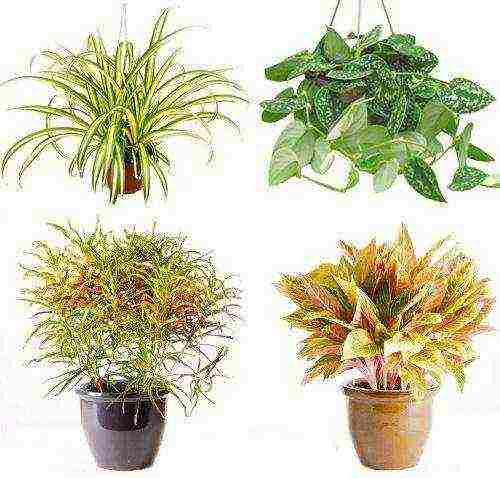
If the busy schedule allows you to devote more time to indoor plants, then you can start breeding plants with flowering species. Any green pets purchased from a flower shop need a period of adaptation to new conditions. Even light-loving species need to be shaded for some time. It is better to cover such a "newcomer" with a plastic bag for the first week, arranging daily 15-minute air ventilation.
Mistakes of novice florists
One of the common misconceptions is the belief in the need for abundant watering, lighting and heat for all indoor plants. Each of them needs different conditions. But there are general requirements, taking into account which you can easily provide a decorative look for a room collection.
Most flowers do not need over-watering. More moisture is needed during intensive growth, flowering and fruiting. In winter, a dormant period begins when watering should be reduced to a minimum. In addition, the water for irrigation must be correct.
Some plants with variegated leaves lose this decorative feature when darkened. With a lack of lighting, light-loving species turn pale and stretch, buds do not form. Shade-loving plants do not tolerate excess sunlight.
Try to relocate, rotate, and rearrange your houseplant pots. They adapt to certain conditions and can hardly tolerate their change.
Soil for indoor flowers loses nutrients, they should be replenished with top dressing. More fertilizer needs to be applied in spring and summer. Some plants do not need feeding at all in winter. Use formula purchased from flower shops.
Timely save pets from pests and diseases with the help of folk remedies, fungicides, insecticides.
It happens that there will be no one to look after the plants for 2–4 weeks (vacation, business trip). In this case, remove them deep into the room, water them abundantly, leave wide containers with water nearby to evaporate moisture. There are also special devices for automatic watering.
Useful and unpretentious indoor plants
The best of all indoor plants to catch toxic compounds from the air are the simplest ones: tradescantia, chlorophytum, hoya, ferns. The green or variegated leaves of chlorophytum are capable of absorbing carbon monoxide. Its source is gas stoves, boilers, water heaters. A poisonous compound is formed by incomplete combustion of any carbonaceous substance.
Recently, the fern has become very popular in indoor collections. One of the reasons is the study of scientists who found out the properties of the plant to purify the air from formaldehyde. This compound is used in the production of adhesives, air fresheners, particle boards. Formaldehyde can cause allergic reactions in humans.
Increase indoor humidity: abutilone (indoor maple), hibiscus, cissus, cyperus. Geranium saturates the air with phytoncides and other useful volatile substances. "Money tree" - krasula, according to legends, provides financial well-being. Watching each green pet is a joy and delight.
Houseplants not only fulfill aesthetic needs. They have a beneficial effect on the psycho-emotional state of a person, increase the comfort of the premises. This is a "green treasure", which everyone can become the owner with a small investment of time and effort.
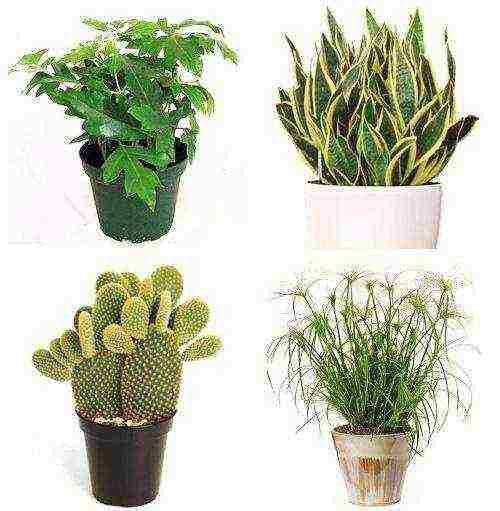
A beautiful flower garden can become a "highlight" of any country house or cozy summer cottage, so you should also take care of flower seedlings in advance, choosing the desired varieties for seedlings, distributing them according to the sowing dates, preparing the soil and containers. The seeds can be bought in a specialized store or you can take care of their preparation yourself. To do this, at the end of the growing season, you need to collect the seeds in the buds and store them in a dry and warm place. For exfoliation, fabric bags or gauze are used: dried buds are put inside and rubbed, and then sifted through a sieve.
Depending on the flowering period of the species, the collection of planting material can be carried out at any time, but most often from August to October. Before sowing, from procedures, it is necessary to carry out stratification, disinfection and hardening of seeds. For even seedlings, heat treatment is possible, re-hardening of seedlings and seedlings (except for lavender) is not recommended, since the flowers are heat-loving plants and may die.
Growing flowers from seeds at home
Almost all ornamental plants love high humidity and long daylight hours, so before growing flower seeds for seedlings, prepare a place on the veranda or windowsill. Drip irrigation is ideal until 2-3 leaves appear, then regular spraying in the morning and evening. Until the first shoots, during the "black earth" period, the seedlings should be kept under a film or cover.
How to grow petunia from seeds
Sow petunia in small containers on a closed balcony, or on a windowsill in a room, at the end of winter. They are very small and require shallow sowing, which often causes some difficulties for growers.
Seedling petunia
The main secret of success lies in maintaining the optimal air temperature (20-22 degrees) and moderate soil moisture for germination and successful rooting of seedlings. In such conditions, the first shoots appear on the 5-7th day. We dive young seedlings into a separate container when they get stronger.
How to grow lavender from seeds
For lavender, south-facing windowsills are ideal. You will need a short, wide pot, good drainage, and an alkaline potting soil.
The first sprouts from lavender seeds
For good germination, lavender needs a little stress: immediately after planting, the container is placed in the refrigerator for re-hardening, previously covered with a film. With the appearance of the first shoots, lavender needs good lighting, in order to avoid stretching the seedlings, it is advisable to provide it with additional lighting. The grown plants need regular watering - in the morning and in the evening, as well as gradual accustoming to the humidity and air temperature in the room where it will grow.
How to grow a rose from seeds
More often roses are propagated by cuttings, but with the help of seeds taken from donated bouquets, you can decorate your garden with really rare specimens.Before sowing, a well-dried material should be soaked in Kornevin's solution and kept for a day at a low temperature.
Sowing rose seeds for seedlings
Seeds should be germinated on a damp cloth. The first seedlings can be seen after 1.5-2 months, after which they are transplanted into peat pots or another container. Young rose sprouts need drip irrigation and long daylight hours: use artificial light sources and automatic irrigation systems.
How to grow an orchid from seeds
Orchid family members are capricious and unable to germinate in a normal environment. Their seeds are microscopic and do not have their own food reserves, which is why it is so difficult to provide them with suitable conditions.
For germination, you will need a special hydrogel, which will be the basis of the substrate. Seeds sterilized with a solution of calcium hydrochloride (10 mg per 100 ml of water) are placed in it.
Orchid seedlings in hydrogel
At a temperature of 18-22 degrees in the room, and sufficient lighting (13-15 hours), the emergence of seedlings can take from a week to several months. In the future, traditional soil is used for orchid seedlings: well-soaked moss or finely chopped pine bark.
Outcome
Knowing how to prepare and grow flower seeds for seedlings for germination, you can prepare in advance by purchasing everything you need. And having prepared the seed material from the donated bouquets, decorate your site with beautiful and unusual plants.
Table of contents:
- Soil and drainage selection
- Optimal watering of plants for the home
- Quality lighting for growing
- Top dressing and fertilization
- Green seed pet
Growing indoor plants is an occupation worthy of a true lady. An exciting process will require the display of ingenuity, perseverance and attentiveness, but it will fully reward you with beautiful healthy flowers. They perfectly decorate the house, creating an atmosphere of comfort and warmth, as well as purify the air and help relieve stress.

Indoor plants will create an atmosphere of coziness, warmth and cheer up.
Growing flowers at home requires adherence to a number of rules. For the prosperous existence and development of plants, it is necessary to create the most comfortable conditions.... Consistent implementation of the rules for caring for them will help to achieve a luxurious appearance of living home decorations.
Soil and drainage selection
The soil in the flower pot should provide enough nutrition and fluid. His choice should be approached responsibly. It should be loose and allow enough water to pass through it for normal growth and development. Excess moisture contributes to root rot. Experienced growers prefer to prepare the soil on their own by mixing the soil with several ingredients. For this purpose, use:
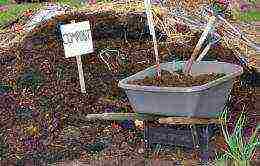
It will take time to prepare the compost, because the components included in it must rot.
- Humus. Formed as a result of decomposition of manure, leaves and plants.
- Compost. It is made by long-term decomposition in heaps of tree branches, leaves, kitchen waste, grass.
- Peat. Formed as a result of decay of plants and animals. In its pure form, it is unsuitable for growing flowers, but it perfectly dilutes the soil and makes it friable.
- Sand. Usually used to add to the substrate, but some succulent species are able to grow in sand as in independent soil.
- Fragments of natural materials (tree bark, slag, stones). Used for loosening and drainage.
It is more convenient for a novice florist to use ready-made mixtures purchased in a store. To facilitate the selection, the latter are divided by type of color. Each mixture contains a specific set of fertilizers and minerals that meet the requirements for a given type of plant.
In addition to the earth, materials are laid at the bottom of the pot to provide drainage.This could be:
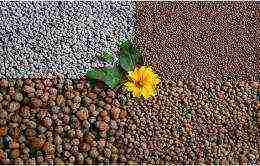
Expanded clay is made from clay and easily absorbs liquid.
- Expanded clay. Building material in the form of balls made of clay, capable of absorbing liquid. It is poured onto the bottom of the pot, 1/5 of the total volume, covered with earth on top, on which the plant is planted.
- Ceramics. Broken crockery shards are used as drainage materials. It is laid on the bottom with the convex side up and covered with sand. Potting soil is added on top.
- Styrofoam. It is laid in small pieces on the bottom and sprinkled with sand. Does not absorb water, so add hydrogel.
When replanting plants, the drainage is replaced with a new one, over time it turns into soil and can contribute to soil acidification.
Back to the table of contents
Optimal watering of plants for the home
For good growth, you need to monitor the quality of the water. It should not be rigid, with a high content of metals and impurities. The ideal option is rain, melted snow, or water from a nearby stream. When using water from the mains, it must be defended for several days before watering.
The amount of water is determined depending on the type of plant. According to general requirements, the soil in the pot should not dry out. Once this happens, watering is required. If the soil is wet, then you should wait, as oversaturation with moisture leads to rotting of the plant roots.
There are several ways to provide colors with liquid:

A flower watering can will help provide the plant with liquid.
- Watering can. The most common and safest way. Soft, weak jets of water do not wash out the soil, exposing the roots, and are safe for fragile green leaves. The wide nozzle allows the soil to be moistened evenly.
- Pallet. The method is called bottom irrigation and consists in the fact that water is poured directly into the pan, from where it is absorbed by the soil through the holes in the planter. The method is suitable for plants that love stagnation: monstera, cyperus, philodendron.
- Spray. It is not applied singly, but only in conjunction with one of the above. The aboveground part of the plants is sprayed with warm water. It is used with low humidity in rooms.
The water temperature should be at room temperature, fluctuations of no more than 5 ° C in both directions are permissible. Spraying is not useful for all plants; before irrigation, you should make sure with the help of reference literature that there is no harm from the process.
Back to the table of contents
Quality lighting for growing
Light is the main condition for the course of the process of photosynthesis, which is vital for indoor plants. Properly organized lighting helps them grow and develop. With its lack, the flowers become stunted, outwardly look inconspicuous.
Based on the type of plant and its location, you should decide what kind of artificial lighting will be: full or partial. If the plant is located near windows or on the balcony, then it will be enough to periodically illuminate it in the morning and evening, prolonging the daylight hours. If the flower pot stands in a dark place at home or does not receive sunlight at all, it will be necessary to select lamps that fully satisfy the conditions of detention.
Fix the luminaire so that it can be lifted as the flowers grow. You don't need to place it too high: the degree of illumination decreases with increasing height. The angle of incidence should not be sharp, the ideal solution would be light directed at the plants perpendicularly.
Back to the table of contents
Top dressing and fertilization
In nature, flowers are fertilized in the course of natural processes; growing plants at home requires human feeding. All fertilizers can be divided into the following groups:
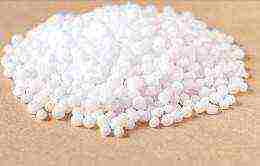
Mineral fertilizers in their composition may contain one or more elements, they are potash, phosphorus and nitrogen.
- Organic.They serve to improve the quality and structure of the soil, fill it with nutrients and microorganisms important for life. Provide oxygen access throughout the pot. Such fertilizers include humus, sawdust, manure, compost.
- Mineral. Varies depending on the number of components. Simple ones include those containing 1 element. In complex it occurs from two or more components. In terms of content, they are nitrogen, potash and phosphorus. Minerals nourish plants and provide them with rapid growth, but you cannot oversaturate the soil with them: this will negatively affect the soil and the plant.
- Bacterial. They increase the fertility of the soil and ensure high germination of seeds. They help the assimilation of nitrogen, convert it into a form convenient for plants.
- Microfertilizers and microelements. The preparations contain components that are missing for flowers (manganese, bromine, iron, zinc and others). They are introduced in small quantities and only according to indications for use.
Fertilizers are applied to the soil separately and on different days. The dosage is determined by the species and appearance of the flower.
Back to the table of contents
Green seed pet 
Growing a houseplant from seeds is not difficult, but it will take patience and proper care.
Growing indoor plants from seeds is not particularly difficult; patience and proper care are required. You can buy seeds at any flower shop. For a start, it is better to opt for an unpretentious flower, for example, abutilone, pelargonium, gloxinia.
The disadvantages of this method are that not all seeds germinate well and it may take several attempts to get viable seedlings. It will take a long time for the flower to grow and become decorative. The reason for the non-germination of seeds can be an expiration date or an incorrect temperature regime.
For sowing seeds, prepare the soil: lightly tamp and moisten it. Sow seeds and sprinkle with a mixture of earth and sand. Cover with glass or plastic, periodically raising them for ventilation and spraying. These are general rules, but you need to adhere to the planting method indicated on the seed bag.
Growing indoor plants is a great relaxation tool.
Many flowers have the ability to bring calm and serenity to the atmosphere of the home.
Many of them can purify the air from toxic substances and absorb electromagnetic radiation from household appliances. The subtle aromas of plants have a beneficial effect on people's emotional health and decontaminate premises. Observing the rules of caring for plants, you can create your own corner of nature. Self-grown plants will bring moral satisfaction and unity with the green oasis of your home.
Similar articles:

